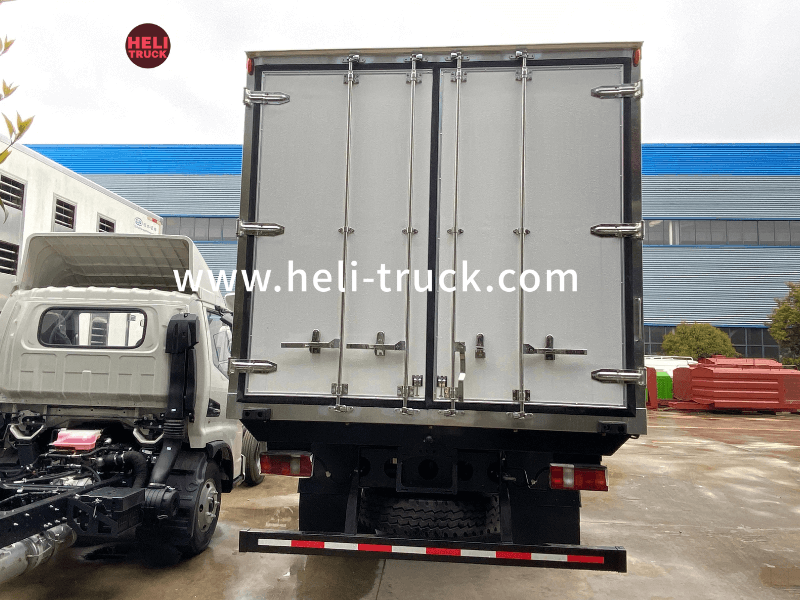Introduction
Garbage compactor trucks play a crucial role in waste management systems, helping to efficiently collect and compact solid waste from residential, commercial, and industrial areas. These specialized vehicles come in various sizes and configurations, each designed to meet specific waste collection needs. In this comprehensive review, we will delve into the world of garbage compactor trucks, exploring their features, benefits, and popular models available in the market today.
History and Evolution of Garbage Compactor Trucks
Garbage compactor trucks, also known as refuse compactors or trash compactors, have a long history dating back to the early 20th century. The first compactor trucks were rudimentary in design and primarily used for collecting and transporting solid waste manually. Over the years, advancements in technology and engineering have transformed these vehicles into highly efficient machines capable of handling large volumes of waste.
Types of Garbage Compactor Trucks
There are several types of garbage compactor trucks available, each designed for specific waste collection needs. The most common types include:
1. Rear Loader Compactor Trucks: These trucks feature a compactor mechanism at the rear of the vehicle, making them ideal for collecting waste from residential areas and small businesses.
2. Front Loader Compactor Trucks: Front loader trucks are commonly used for commercial waste collection and are equipped with a front-loading bin that can be emptied into the compactor.
3. Side Loader Compactor Trucks: Side loader trucks are designed for collecting waste from narrow streets and alleys, with a side-loading mechanism that allows for efficient waste collection.
4. Transfer Station Compactor Trucks: These specialized trucks are used to transport waste from collection points to transfer stations or recycling facilities, where the waste is further processed.
Features and Benefits of Garbage Compactor Trucks
Garbage compactor trucks offer a range of features and benefits that make them indispensable in waste management operations. Some of the key features include:
1. Compaction Mechanism: The compaction mechanism in these trucks helps to reduce the volume of waste, allowing for more efficient collection and transportation.
2. Hydraulics System: Garbage compactor trucks are equipped with powerful hydraulic systems that operate the compaction mechanism and other functions of the vehicle.
3. Waste Storage Capacity: Different models of compactor trucks offer varying storage capacities, allowing operators to choose a truck that suits their waste collection needs.
4. Durability and Reliability: Garbage compactor trucks are built to withstand the rigors of daily waste collection operations, ensuring long-lasting performance and reliability.
Popular Garbage Compactor Truck Models
In the market today, there are several popular garbage compactor truck models known for their performance, efficiency, and durability. Some of the top models include:
1. Heil Half/Pack Freedom Front Loader: This front loader compactor truck is renowned for its innovative design, user-friendly controls, and high compaction ratio.
2. McNeilus Atlantic Series Rear Loader: The McNeilus Atlantic Series rear loader is a versatile and durable truck known for its efficient waste collection capabilities and low maintenance requirements.
3. Labrie Expert 2000 Side Loader: The Labrie Expert 2000 side loader is a compact and maneuverable truck ideal for collecting waste from tight spaces and narrow streets.
4. Mack Granite Transfer Station Truck: The Mack Granite transfer station truck is a heavy-duty vehicle designed for transporting waste from collection points to transfer stations with ease.
Maintenance and Care of Garbage Compactor Trucks

Proper maintenance and care are essential to ensure the optimal performance and longevity of garbage compactor trucks. Regular maintenance tasks include:
1. Checking and replacing Aerial platform truck maintenance and filters.
2. Inspecting and lubricating moving parts of the compaction mechanism.
3. Cleaning and sanitizing the storage compartment to prevent odors and contamination.
4. Conducting routine inspections of the vehicle's components for signs of wear or damage.
Conclusion
Garbage compactor trucks are vital assets in waste management systems, offering efficient and reliable solutions for collecting and transporting solid waste. By understanding the different types, features, and benefits of compactor trucks, operators can choose the right vehicle for their waste collection needs. With proper maintenance and care, these trucks can provide years of service, contributing to cleaner and healthier communities.
In this comprehensive review, we have explored the history, evolution, types, features, popular models, and maintenance of garbage compactor trucks. By investing in quality compactor trucks and following best practices in maintenance, waste management professionals can streamline their operations and contribute to a sustainable environment.
